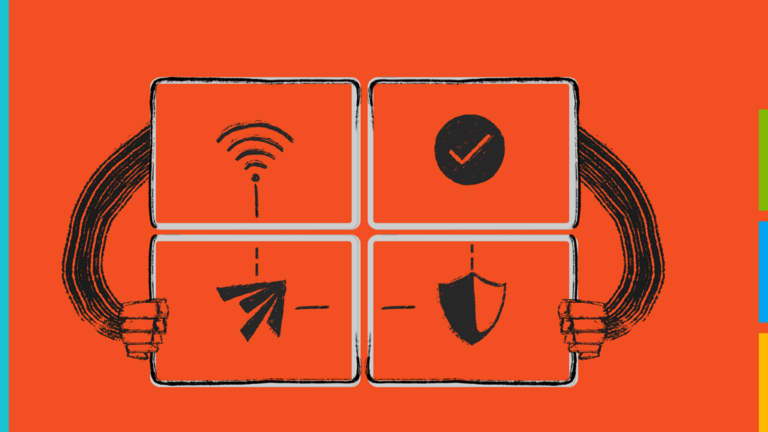How Apple Devices Are Built for BC/DR (Hint: It’s iCloud)
Apple devices are designed with user privacy in mind. They’re simple to connect within a secure network and optimized for remote use in an enterprise environment. It’s almost like Apple products were built with business continuity in mind.
The same mobile-friendly framework that makes Mac computers and iOS devices easy to manage using an MDM solution, makes them easy to backup. And the rise of the cloud has only made life easier for companies looking to store backups of their data in a decentralized location. This has also led to the emergence of more affordable business continuity and disaster recovery (BC/DR) plans.
Here’s what you need to know about planning for worst case scenarios for the Apple devices in your environment and why.
Apple devices are built for backups
If you’re working on a Mac computer, you likely have access to FileVault. This indispensable app allows end users to encrypt their hard drives, adding an extra layer of security to their data.
Meanwhile, if your enterprise users have active iCloud accounts, your end users can set their devices to automatically backup to the cloud. This stores everything from the organization of your home screen to your preferences within apps.
This means that whether an employee walks out with their laptop for good, someone lifts a company iPhone from your bag in the train, or a machine just quits, all of this information can be preloaded onto a new device using the same Apple ID.
iCloud’s architecture makes it a flexible and excellent tool for IT admins who set their users up for success and productivity. If you are an IT admin in a business environment where Apple devices are present and you haven’t learned to love iCloud yet, keep an open mind. Each new use case you encounter will shape your understanding of how iCloud backups can support your team’s objectives.
Enable valuable BC/DR tools through your MDM solution
One of the most popular features of the top MDM solutions is that they provide single pane of glass IT management. Using one easy-to-navigate portal, a mobile device manager enables IT admins to flip a toggle button to enable valuable tools on enrolled Apple devices, including enforced automatic iCloud backups.
An MDM solution can also help your team when it’s time to review network security and monitor activity. A mobile device manager will:
- Streamline an inventory of all the apps on the machines in your environment.
- Enable IT admins to review systems activity and identify security risks.
- Empower IT admins to set up alerts for certain types of activity and vulnerabilities, whether they’re related to an urgent software update to mitigate a security risk or you’re concerned with a recent phishing attempt.
- Give IT the ability to force install the disaster recovery app of your choice as a requirement for joining the network using a managed Apple ID.
And this is just a partial list of the things mobile device management solutions can do to help you get a handle on your company’s Apple devices and the data stored on them before something goes wrong. (And no matter how prepared you are, something unexpected will happen.)
Incorporate BC/DR into Your Business Plan
One of the main benefits of using an MDM to manage the IT needs of the Mac users on your network is that it enables you to move your team from reactive to proactive. A huge piece of this puzzle relies on your organization’s use of the cloud.
As cloud computing and cloud storage has gained popularity, agile organizations have realized the benefits of having a decentralized backup that embraces redundancy. It’s not a fringe benefit – it’s part of a smart business plan.
We recommend looking at business continuity and disaster recovery plan for your business as a living document that is part of a lifecycle. Much as we’d love to pretend otherwise, things go wrong. Cyberattacks are highly likely in 2020, and data disasters can be catastrophic for businesses of any size.
Companies that proactively and regularly reconsider how they’ll respond when something goes sideways are the ones that have a leg up in their industry. And doing this is as simple as systematically enabling your IT team to monitor security risks and resolve them as they come up.
Be the Advocate for BC/DR at Your Enterprise
A recent IBM report found that the average cost of a data breach when an imposter or thief steals information was $871,686. Whether you’re working at an organization with 75,000 employees or 200, your role in IT positions you to be a vocal advocate for adding a BC/DR plan to your organization’s list of priorities. You may not have the budgetary control of the CFO, but the cost of data recovery after a disaster is worth the consideration of your executive team.
If your organization has been welcoming Apple devices without providing IT support, ask them to consider the potential cost of not securing those devices with the same attention they give to their fleet of PCs. If there is a security breach or malicious activity, your company risks losing revenue, productivity, and its reputation.
Especially if the Mac computer and iOS devices in your environment have come through a BYOD policy, you may not just have a gap in end user support – you’re likely missing a hole in your network’s security or encryption, and you could be missing out on the access you need to backup or reproduce troves of user data.
The good news: Mac computers and iOS devices are easy to manage when you have the right tools and a plan in place to ensure your users’ data and applications are secured. If you have questions about how you can use your MDM solution to help execute your BC/DR plan, get in touch with the support team at Addigy.







